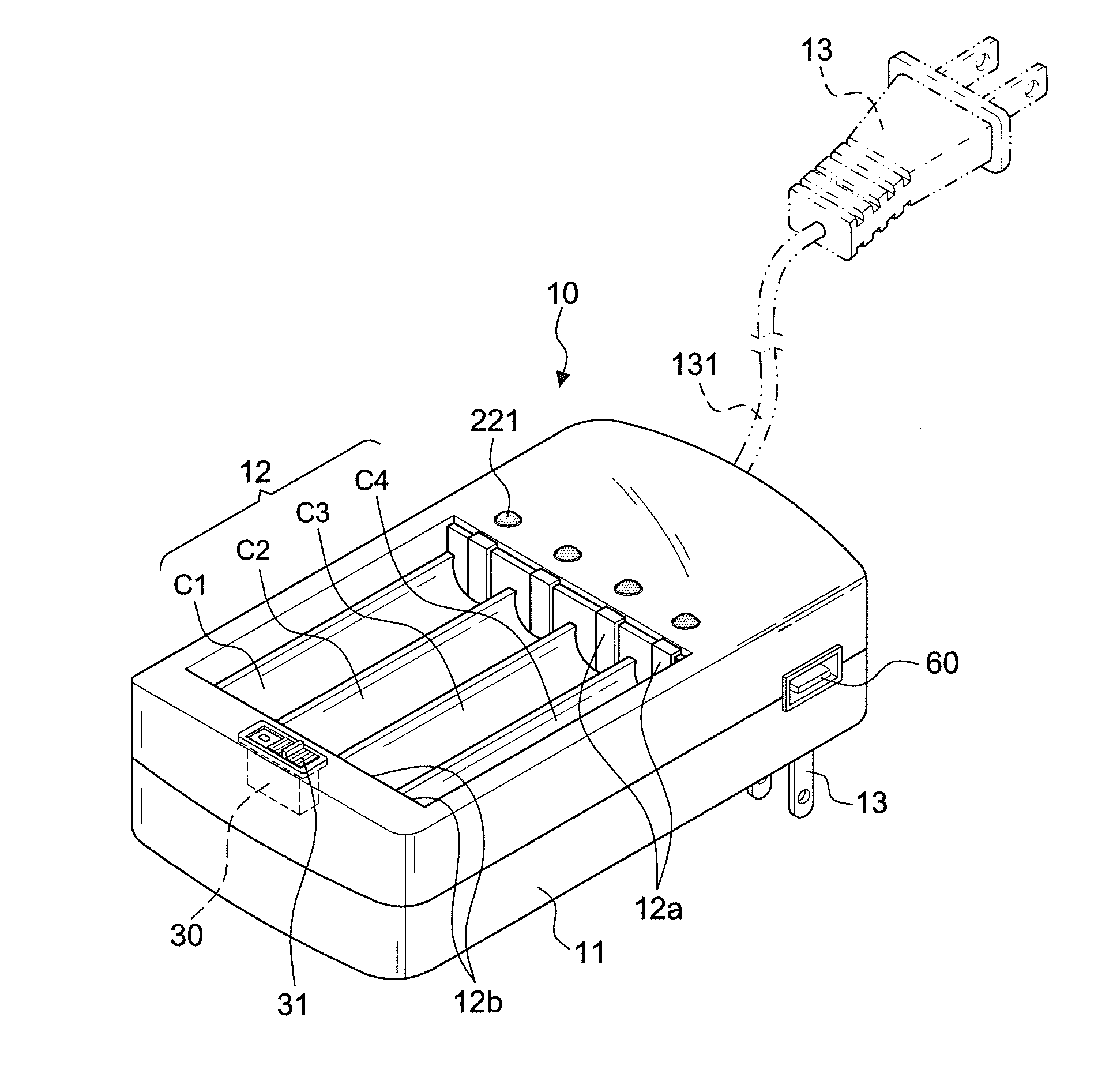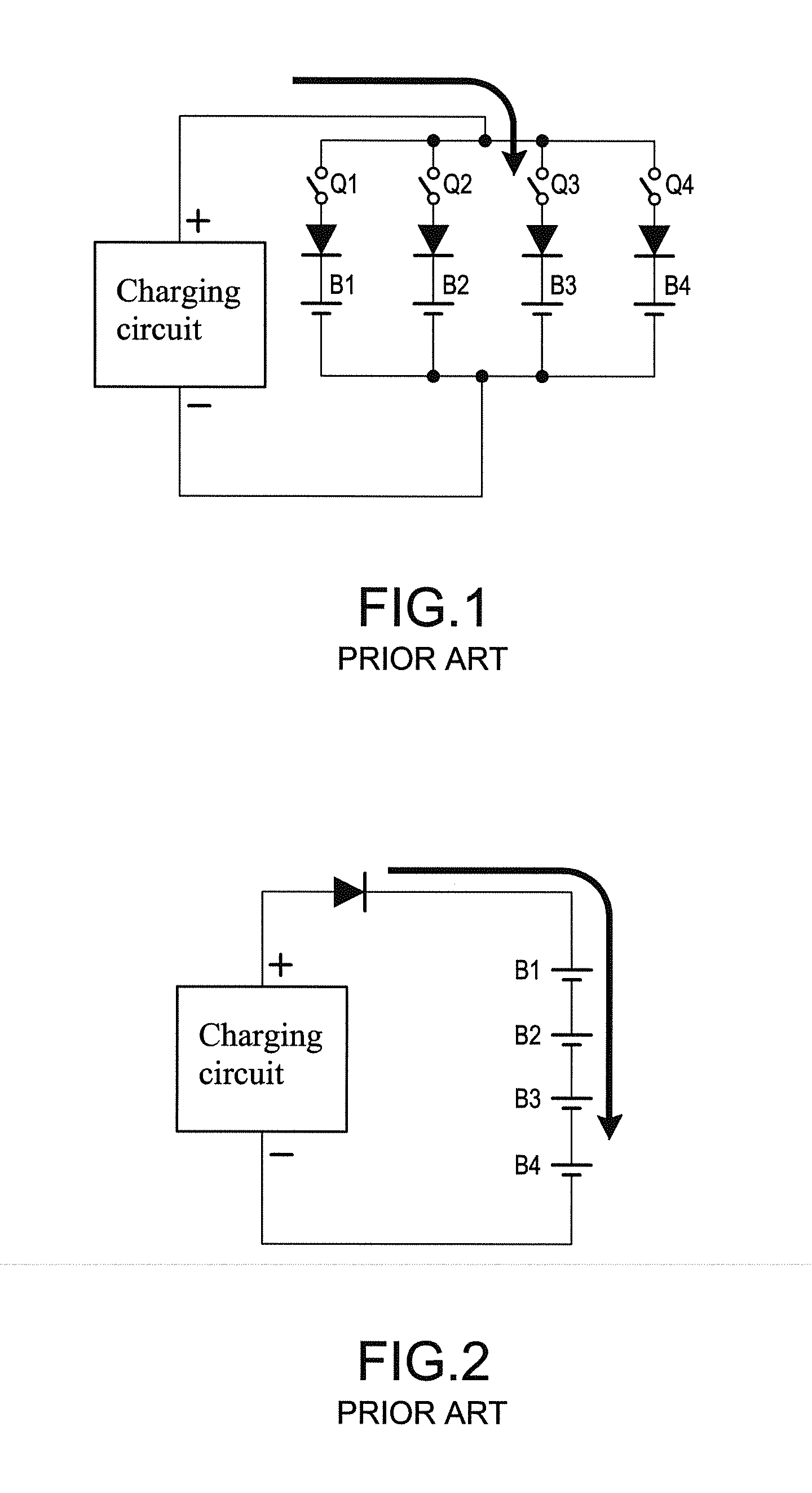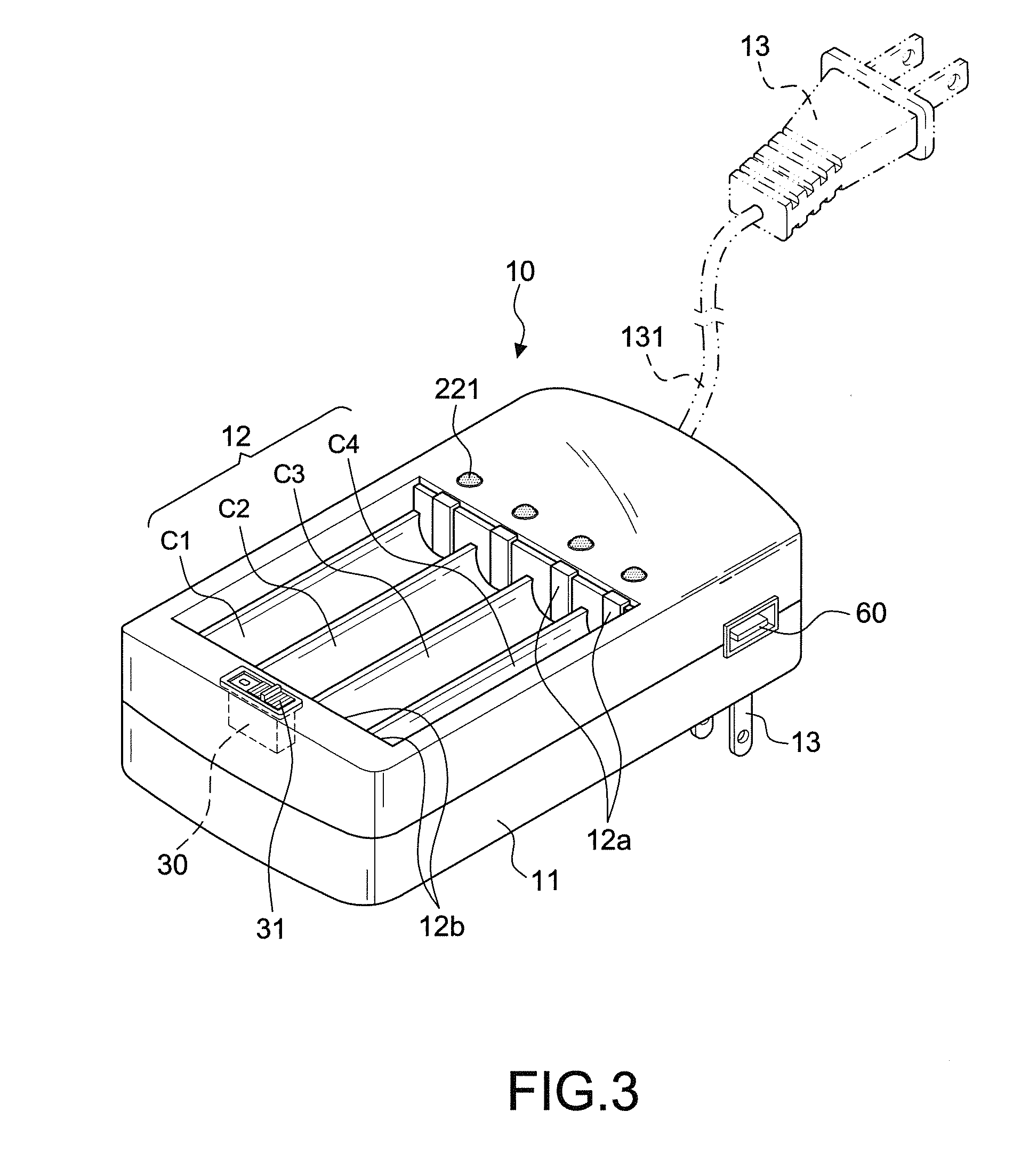Series battery charger with the function of separate detection
a technology of battery charger and detection function, applied in the direction of parallel/serial switching, transportation and packaging, and the arrangement of several simultaneous batteries, can solve the problems of increasing costs, environmental pollution, and user inconvenience, and achieve the effect of enhancing the effect and safety of the charger
- Summary
- Abstract
- Description
- Claims
- Application Information
AI Technical Summary
Benefits of technology
Problems solved by technology
Method used
Image
Examples
Embodiment Construction
[0062]With reference to FIG. 3 for a perspective view of a battery charger 10 of the present invention, the charger 10 comprises: a casing 11, for containing and covering charging components (such as a switching power supply and a charging circuit), and a charging block 12 disposed on a surface of the casing 11 and having a plurality of charging compartments provided for placing a plurality of AA or AAA batteries B1˜B4 therein. In this preferred embodiment, there are four charging compartments C1, C2, C3, C4, but the invention is not limited to such quantity only. In a small charger, there are two charging compartments. Four charging compartments are used as an example for the description of a preferred embodiment and the illustration of its related drawings as follows. The casing 11 further comprises a plug 13 connectible to an external power source, wherein the plug 13 of this preferred embodiment is foldable and disposed at the bottom of the casing 11. Of course, an external powe...
PUM
 Login to View More
Login to View More Abstract
Description
Claims
Application Information
 Login to View More
Login to View More - R&D
- Intellectual Property
- Life Sciences
- Materials
- Tech Scout
- Unparalleled Data Quality
- Higher Quality Content
- 60% Fewer Hallucinations
Browse by: Latest US Patents, China's latest patents, Technical Efficacy Thesaurus, Application Domain, Technology Topic, Popular Technical Reports.
© 2025 PatSnap. All rights reserved.Legal|Privacy policy|Modern Slavery Act Transparency Statement|Sitemap|About US| Contact US: help@patsnap.com



